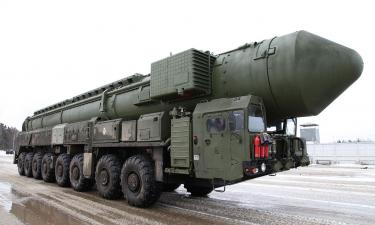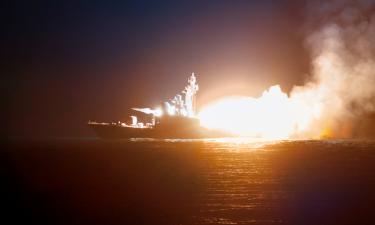Water rises in New Orleans after hurricane
Army engineers achieved no success to plug New Orleans' breached levees with giant sandbags, and the governor said the situation was worsening the only option to abandon the flooded city.
"The challenge is an engineering nightmare," Gov. Kathleen Blanco said on ABC's "Good Morning America." "The National Guard has been dropping sandbags into it, but it's like dropping it into a black hole."
As the waters continued to rise in New Orleans, four Navy ships raced toward the Gulf Coast with drinking water and other emergency supplies, and Red Cross workers from across the country converged on the devastated region. The Red Cross reported it had about 40,000 people in 200 shelters across the area in one of the biggest urban disasters the nation has ever seen.
The death toll from Hurricane Katrina reached at least 110 in Mississippi alone, while Louisiana put aside the counting of the dead to concentrate on rescuing the living, many of whom were still trapped on rooftops and in attics.
A full day after the city thought it had escaped Katrina's full fury, two levees broke and spilled water into the streets of New Orleans on Tuesday, swamping an estimated 80 percent of the bowl-shaped, below-sea-level city, inundating miles and miles of homes and rendering much of New Orleans uninhabitable for weeks or months.
"We are looking at 12 to 16 weeks before people can come in," New Orleans Mayor Ray Nagin said on ABC's "Good Morning America, "and the other issue that's concerning me is have dead bodies in the water. At some point in time the dead bodies are going to start to create a serious disease issue."
Blanco acknowledged that looting was a severe problem but said that officials had to focus on survivors. "We don't like looters one bit, but first and foremost is search and rescue," she said.
To repair one of the levees holding back Lake Pontchartrain, officials late Tuesday dropped 3,000-pound (1,350-kilogram) sandbags from helicopters and hauled dozens of 15-foot (4.5-meter) concrete barriers into the breach. Maj. Gen. Don Riley of the U.S. Army Corps of Engineers said officials also had a more audacious plan: finding a barge to plug the 500-foot (150-meter) hole.
Riley said it could take close to a month to get the water out of the city. If the water rises a few feet (meters) higher, it could also wipe out the water system for the whole city, said New Orleans' homeland security chief, Terry Ebbert.
Blanco said she wanted the Superdome _ a sports arena that had become a shelter of last resort for about 20,000 people _ evacuated within two days, along with other gathering points for storm refugees. The situation inside the dank and sweltering Superdome was becoming desperate: The water was rising, the air conditioning was out, toilets were broken, and tempers were rising.
At the same time, sections of Interstate 10, the only major freeway leading into New Orleans from the east, lay shattered, dozens of huge slabs of concrete floating in the floodwaters. I-10 is the only route for commercial trucking across southern Louisiana.
The sweltering city of 480,000 people _ an estimated 80 percent of whom obeyed orders to evacuate as Katrina closed in over the weekend _ also had no drinkable water, and the electricity could be out for weeks.
"The logistical problems are impossible and we have to evacuate people in shelters," the governor said. "It's becoming untenable. There's no power. It's getting more difficult to get food and water supplies in, just basic essentials."
She said arrangements were being made to shelter refugees across the state, and buses were being sent in to take them from New Orleans.
The Federal Emergency Management Agency was considering putting people on cruise ships, in tent cities, mobile home parks, and so-called floating dormitories - boats the agency uses to house its own employees.
A helicopter view of the devastation over Louisiana and Mississippi revealed people standing on black rooftops, baking in the sunshine while waiting for rescue boats.
"I can only imagine that this is what Hiroshima looked like 60 years ago," said Mississippi Gov. Haley Barbour after touring the destruction by air Tuesday.
All day long, rescuers in boats and helicopters plucked bedraggled flood refugees from rooftops and attics. Louisiana Lt. Gov. Mitch Landrieu said 3,000 people have been rescued by boat and air, some placed shivering and wet into helicopter baskets. They were brought by the truckload into shelters, some in wheelchairs and some carrying babies, with stories of survival and of those who didn't make it.
"Oh my God, it was hell," said Kioka Williams, who had to hack through the ceiling of the beauty shop where she worked as floodwaters rose in New Orleans' low-lying Ninth Ward. "We were screaming, hollering, flashing lights. It was complete chaos."
Looting broke out in some New Orleans neighborhoods, prompting authorities to send more than 70 additional officers and an armed personnel carrier into the city. One police officer was shot in the head by a looter but was expected to recover, authorities said.
On New Orleans' Canal Street, dozens of looters ripped open the steel gates on clothing and jewelry stores and grabbed - merchandise. In Biloxi, Mississippi, people picked through casino slot machines for coins and ransacked other businesses. In some cases, the looting was in full view of police and National Guardsmen.
Officials said it was simply too early to estimate a death toll. One Mississippi county alone said it had suffered at least 100 deaths, and officials are "very, very worried that this is going to go a lot higher," said Joe Spraggins, civil defense director for Harrison County, home to Biloxi and Gulfport. In neighboring Jackson County, officials said at least 10 deaths were blamed on the storm.
Some of the dead in Harrison County were from a beachfront apartment building that collapsed under a 25-foot (7.5-meter) wall of water as Hurricane Katrina slammed the Gulf Coast with 145-mph (233-kph) winds Monday. Louisiana officials said many were feared dead there, too, making Katrina one of the most punishing storms to hit the United States in decades.
Blanco asked residents to spend Wednesday in prayer.
"That would be the best thing to calm our spirits and thank our Lord that we are survivors," she said. "Slowly, gradually, we will recover; we will survive; we will rebuild."
Across Louisiana, Mississippi and Alabama, more than 1 million residents remained without electricity, some without clean drinking water. Officials said it could be weeks, if not months, before most evacuees will be able to return.
Emergency medical teams from across the country were sent into the region and President George W. Bush cut short his Texas vacation Tuesday to return to Washington to focus on the storm damage.
Federal Emergency Management Agency director Mike Brown warned that structural damage to homes, diseases from animal carcasses and chemicals in floodwaters made it unsafe for residents to come home anytime soon.
Katrina, which was downgraded to a tropical depression, packed winds around 30 mph (48 kph) as it moved through the Ohio Valley early Wednesday, with the potential to dump 8 inches (20 centimeters) of rain and spin off deadly tornadoes.
The remnants of Katrina spawned bands of storms and tornadoes across Georgia that caused at least two deaths, multiple injuries and leveled dozens of buildings. A tornado damaged 13 homes near Marshall, Virginia, the AP reports.
Subscribe to Pravda.Ru Telegram channel, Facebook, RSS!





